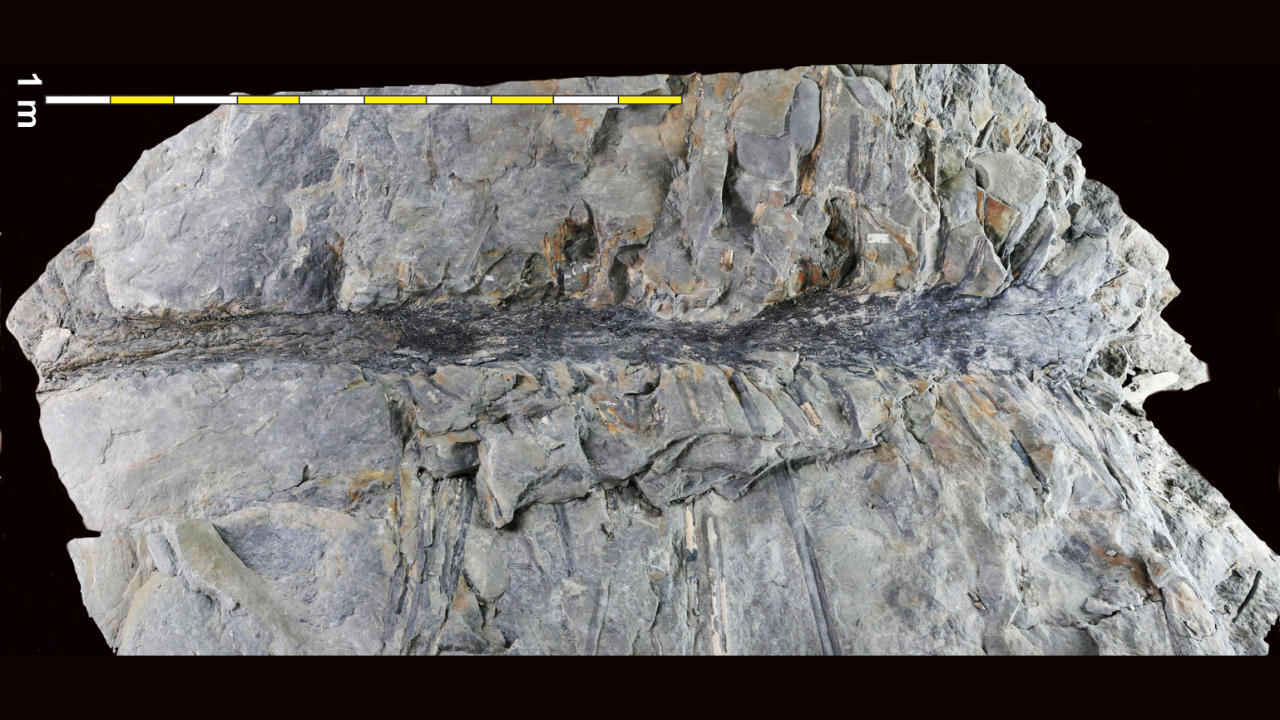'We were gobsmacked': 350 million-year-old tree fossils are unlike any scientists have ever seen
Rare tree fossils preserved with their leaves have an architecture unlike any plant known today and represent the earliest evidence of smaller trees growing beneath the forest canopy.
Exceptionally preserved plant fossils belonging to bizarre bushy trees have been unearthed in southeastern Canada, new research shows. The ancient trees are unlike anything scientists have ever seen and may be examples of evolutionary experimentation.
An earthquake 350 million years ago toppled the trees and entombed them in a mud bath, leaving near-perfect imprints of their trunks and leaves in sediments at the bottom of what was then a lake. Geologists discovered the first fossilized tree while excavating a quarry in New Brunswick in 2017, and have subsequently unearthed four more near-identical specimens.
"We were gobsmacked," study lead author Robert Gastaldo, a professor emeritus of geology at Colby College in Maine, told Live Science in an email. "It is an anomaly to find a fossil plant of tree size that has leaves preserved [and] attached to the trunk in a crown configuration."
Usually, only the trunks of ancient trees are preserved in the fossil record. But the new discovery reveals a dense canopy of more than 250 leaves crowded around the top 30 inches (75 centimeters) of a spindly, unbranched tree trunk that stood around 8.7 feet (2.7 meters) tall. The leaves grew up to 9.8 feet (3 m) long and extended out from the trunk in "tightly compressed spirals," according to the study, published Friday (Feb. 2) in the journal Current Biology.
Related: 23 million-year-old petrified mangrove forest discovered hiding in plain sight in Panama
The trees, named Sanfordiacaulis, likely evolved this spiral layout to maximize the amount of sunlight the leaves captured for photosynthesis, the researchers wrote in the study. Their shorter stature also suggests these plants are the earliest example of smaller trees growing beneath the canopy of taller trees.
The reconstruction of these plants "distorts our sense of how trees are organized and grow," Gastaldo said. "Their growth architecture is similar to, but distinctly different from, two tree models found in today's tropics," including a small number of tree ferns, gymnosperms (plants with exposed seeds) and flowering plants, he said. But these modern plants carry fewer leaves in their crowns — between 15 and 20 in the case of tree ferns and palm trees, he added.
Get the world’s most fascinating discoveries delivered straight to your inbox.
Sanfordiacaulis may have stood out among the vegetation of the Carboniferous period (359 million to 299 million years ago) the same way quiver trees (Aloidendron dichotomum, formerly Aloe dichotoma) and baobabs (Adansonia) do today, Gastaldo said.
"We consider quiver trees and baobabs as oddballs relative to the rest of the angiosperms [flowering plants]," he said. "Such oddballs existed in deep time in other plant groups that lived long before flowering plants appeared on the planet, but we don't have clues to their oddities unless a very rare event happened to preserve the plant in its entirety."
Plants greatly diversified during the Devonian period (419 million to 359 million years ago) and Carboniferous, according to the study. The strange fossils may be an example of an evolutionary experiment from this time that eventually failed, Gastaldo said. "The evolution of the plant kingdom underwent many different experimental forms that were successful for some million or more years of time, but didn't survive the test of time," he said.

Sascha is a U.K.-based staff writer at Live Science. She holds a bachelor’s degree in biology from the University of Southampton in England and a master’s degree in science communication from Imperial College London. Her work has appeared in The Guardian and the health website Zoe. Besides writing, she enjoys playing tennis, bread-making and browsing second-hand shops for hidden gems.




